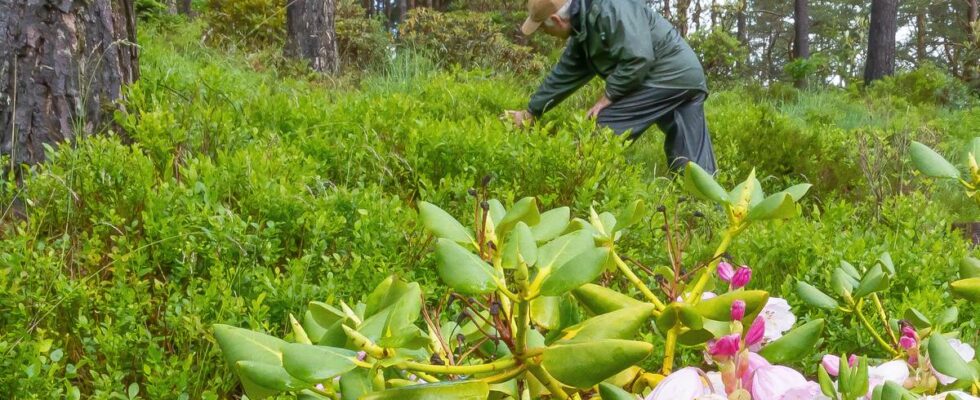Operations manager John Ivar Lima at Rogaland Arboretum has a lot to look after in the 700-acre nature park in Sandnes. All year round, he is outside and takes in most of what is happening in nature. This spring he has developed a worry wrinkle. – I think there are few bumblebees to be seen. I’m getting a little worried about what’s happening now, says Lima as he shows us around the park. The rhododendron is about to blossom after a colorful spring in the Rogaland Arboretum Photo: Gunnar Morsund / news The nature park has, among other things, over 100 different species of rhododendron. The blueberry heather lies like a green carpet between trees and bushes. But there are almost no bumblebees or bees buzzing around. – What struck me this spring when we were outside was how richly the blueberry heather bloomed. But where is all the map that should have been here? The amount of maps does not correspond to all the flowering we saw earlier this spring, says Lima. Operations manager John Ivar Lima at Rogaland Arboretum in Sandnes has seen fewer bumblebees and bees this spring, and that worries him. Photo: Gunnar Morsund / news Without bumblebees and bees that contribute to pollination, the blueberry flowers will not become maps, and later berries we can harvest. John Ivar Lima is not the only one who thinks there are fewer bumblebees and bees out in nature this spring. Bad insect summer last year Insect researcher and conservator Alf Tore Mjøs at Museum Stavanger has recorded the same. He has a clear theory about what happened. – It is somewhat as expected, because we had a very bad, especially late summer, last year. 2023 was a difficult year for insects, says Mjøs Conservator Alf Tore Mjøs at Museum Stavanger has been capturing insects since 2019 in order to obtain a data base that can provide an answer to whether there will be fewer insects in nature Photo: Odin Omland / news The summer of 2023 began with drought in southern Norway in May and June. Then it became wet and cool in July and August. – It was sometimes extremely wet. Strong storm and wind. 2023 was a bad year for the insects, and we will probably carry this with us now into 2024. He believes it could have consequences next year as well. – It depends on how the weather will be in the future. Insects have a tremendous ability to reproduce, so things will return to normal. But this will have consequences for two seasons where we will notice that the insect populations are at a slightly lower level. Few berries for autumn Lima at Rogaland Arboret is worried about the berry season for autumn. Few bees and bumblebees lead to less pollination, and thus fewer berries. The entomologist shares the concern. – It can probably cause a negative development in the crop, it can. If he has followed over many years, then there is reason to trust what he observes. I would like to think that it has to do with the bad summer we had last year, says Mjøs. Alf Tore Mjøs is in the process of going through all the insect material that has been collected. Photo: Odin Omland / news The conservator at Museum Stavanger is working on a project where he counts insects to find a basis for being able to follow the development of insects. Looking for answers Mjøs says it is painstaking and long-term work to be able to answer whether the insects are in a dangerous decline. It takes up to 30 years before the researchers can come to a conclusion. But Mjøs has a certain concern on behalf of the insects. – Climate change is undoubtedly a driver leading to the decline of insects. So there is reason to follow developments closely. And maybe be a little worried, says Mjøs. John Ivar Lima in Rogaland Arboretum wants a quick answer. – There is so much we don’t know. And often it is perhaps too late when one discovers it so that it becomes difficult to reverse the development, he concludes. Operations manager John Ivar Lima at Rogaland Arboretum spends many hours outside in the nature park in Sandnes Photo: Gunnar Morsund / news Published 11.06.2024, at 21.33
ttn-69
Cold and wet summer last year leads to fewer bumblebees and bees – worried about the berry harvest – news Rogaland – Local news, TV and radio

